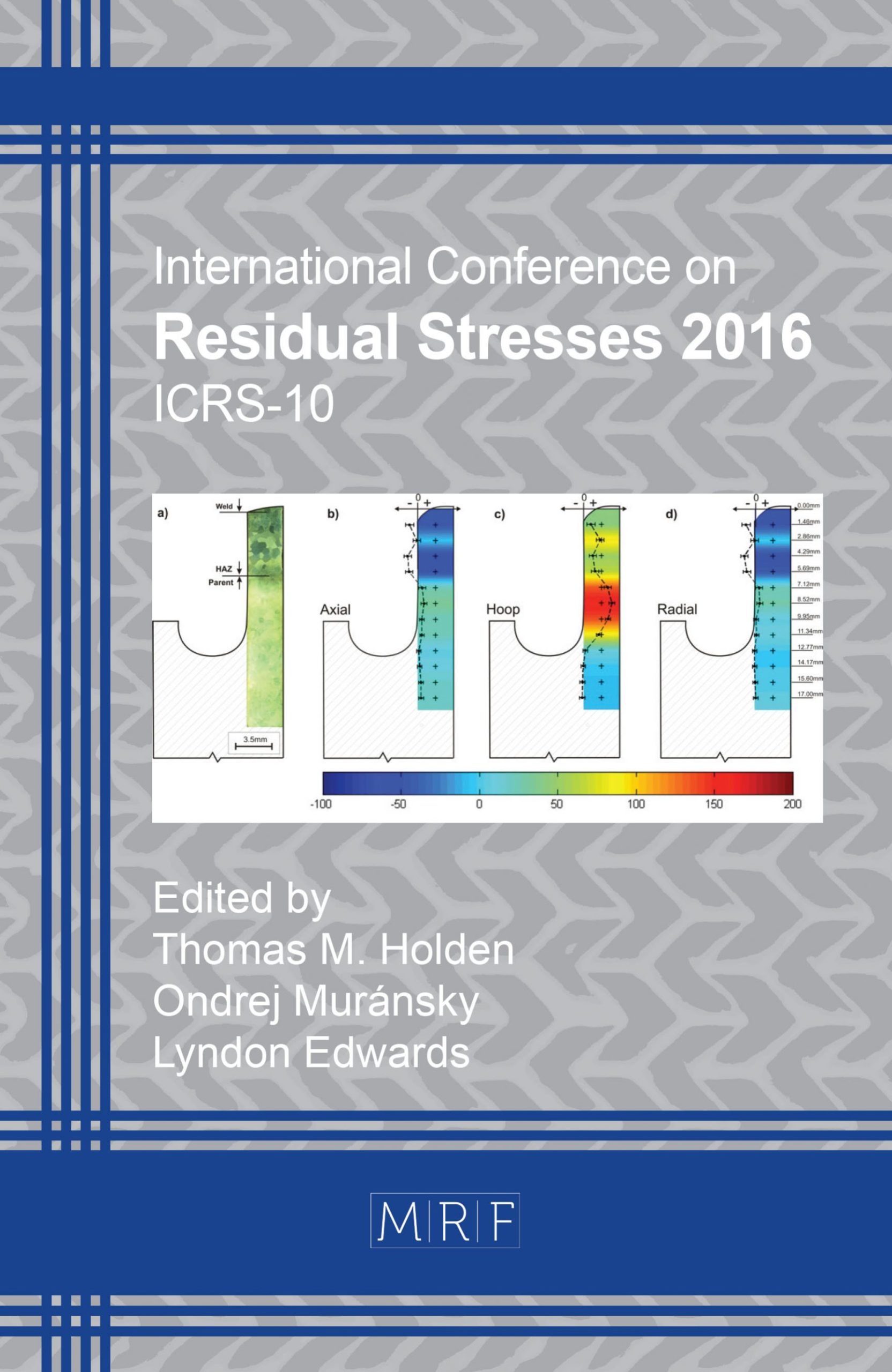Residual Stress Characterization and Control in the Additive Manufacture of Large Scale Metal Structures
J.R. Hönnige, S. Williams, M.J. Roy, P. Colegrove, S. Ganguly
download PDFAbstract. Additive Manufacture of metals is an area of great interest to many industrial sectors. All metal additive manufacturing processes suffer with problems of residual stresses and subsequent distortion or performance issues. Wire + Arc Additive Manufacture (WAAM) is a metal additive manufacture process that is suitable for the production of large scale engineering structures. Paramount to the successful industrial application of WAAM is the understanding and control of residual stress development and their subsequent effects. Vertical inter-pass rolling can be used to reduce these residual stresses, but its potential is limited due to the absence of lateral restraint of the wall. So it deforms the wall in its transverse direction rather than reducing longitudinal tensile residual stresses, which is the main source of the distortion. The potential of a new pinch-roller concept is currently being investigated at Cranfield University with very promising preliminary results: It was possible to entirely eliminate the distortion of a Ti 6Al 4V WAAM wall.
Keywords
Additive Manufacturing, Neutron Diffraction, Contour Method, Cold Rolling, Pinch Rolling
Published online 12/22/2016, 6 pages
Copyright © 2016 by the author(s)
Published under license by Materials Research Forum LLC., Millersville PA, USA
Citation: J.R. Hönnige, S. Williams, M.J. Roy, P. Colegrove, S. Ganguly, ‘Residual Stress Characterization and Control in the Additive Manufacture of Large Scale Metal Structures’, Materials Research Proceedings, Vol. 2, pp 455-460, 2017
DOI: http://dx.doi.org/10.21741/9781945291173-77
The article was published as article 77 of the book Residual Stresses 2016
![]() Content from this work may be used under the terms of the Creative Commons Attribution 3.0 licence. Any further distribution of this work must maintain attribution to the author(s) and the title of the work, journal citation and DOI.
Content from this work may be used under the terms of the Creative Commons Attribution 3.0 licence. Any further distribution of this work must maintain attribution to the author(s) and the title of the work, journal citation and DOI.
References
[1] S. W. Williams, F. Martina, a. C. Addison, J. Ding, G. Pardal, and P. Colegrove, “Wire+Arc Additive Manufacturing,” Mater. Sci. Technol., vol. 00, no. 0, p. 1743284715Y.000, 2015.
[2] J. Ding, P. Colegrove, J. Mehnen, S. Williams, F. Wang, and P. S. Almeida, “A computationally efficient finite element model of wire and arc additive manufacture,” Int. J. Adv. Manuf. Technol., vol. 70, pp. 227–236, 2014. http://dx.doi.org/10.1007/s00170-013-5261-x
[3] P. a. Colegrove, H. E. Coules, J. Fairman, F. Martina, T. Kashoob, H. Mamash, and L. D. Cozzolino, “Microstructure and residual stress improvement in wire and arc additively manufactured parts through high-pressure rolling,” J. Mater. Process. Technol., vol. 213, pp. 1782–1791, 2013. http://dx.doi.org/10.1016/j.jmatprotec.2013.04.012
[4] F. Martina, M. J. Roy, B. A. Szost, S. Terzi, P. A. Colegrove, S. W. Williams, P. J. Withers, J. Meyer, and M. Hofmann, “Residual stress of as-deposited and rolled wire+arc additive manufacturing Ti–6Al–4V components,” Mater. Sci. Technol., vol. 0836, no. April, 2016. http://dx.doi.org/10.1080/02670836.2016.1142704
[5] H. E. Coules, “Contemporary approaches to reducing weld-induced residual stress,” Mater. Sci. Technol., vol. 29, no. 1, 2012.
[6] P. Colegrove, J. Ding, M. Benke, and H. Coules, “Application of High-Pressure Rolling to a Friction Stir Welded Aerospace Panel,” in Mathematical Modelling of Weld Phenomena 10, C. Sommitsch and N. Enzinger, Eds. Graz, 2013, pp. 691 – 702.
[7] J. Ding, P. Colegrove, J. Mehnen, S. Ganguly, P. M. S. Almeida, F. Wang, and S. Williams, “Thermo-mechanical analysis of Wire and Arc Additive Layer Manufacturing process on large multi-layer parts,” Comput. Mater. Sci., vol. 50, no. 12, pp. 3315–3322, 2011. http://dx.doi.org/10.1016/j.commatsci.2011.06.023
[8] B. A. Szost, S. Terzi, F. Martina, D. Boisselier, A. Prytuliak, T. Pirling, M. Hofmann, and D. J. Jarvis, “A comparative study of additive manufacturing techniques: Residual stress and microstructural analysis of CLAD and WAAM printed Ti-6Al-4V components,” Mater. Des., vol. 89, pp. 559–567, 2016. http://dx.doi.org/10.1016/j.matdes.2015.09.115































